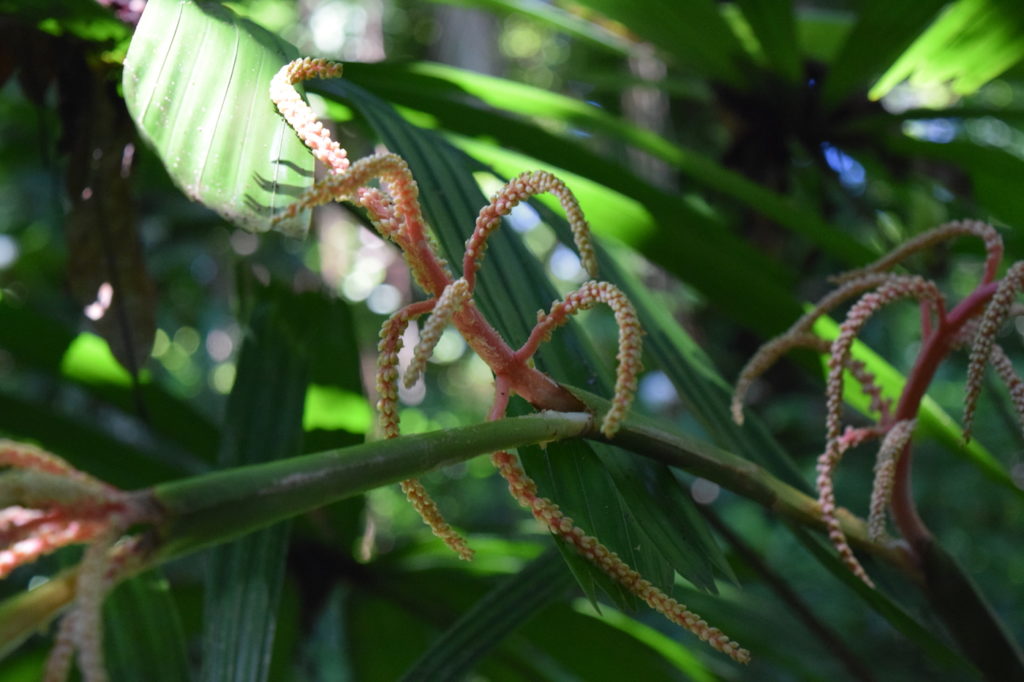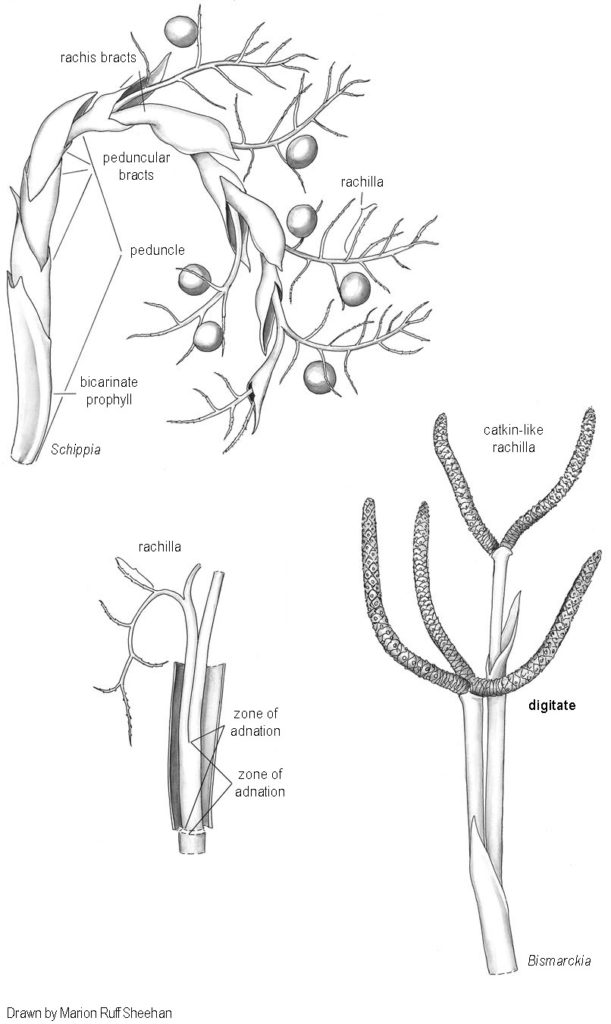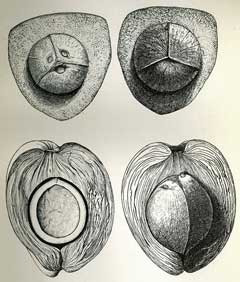
Palm flower stalks, known as inflorescences, arise within the leaf axils (a point on the main stem where the buds or shoots develop) for most species of palms, but in those species having a crownshaft, inflorescences emerge from the stem just below the base of the crownshaft.

Developing inflorescences are typically ensheathed within a protective bract called a prophyll. The primary stalk of the inflorescence is known as the peduncle, with the first- and second-order branches called the rachis and rachilla, respectively. Both male and female flowers occur on monoecious palms, while dioecious palms possess only male flowers or female flowers.

Palm fruits are botanically classified as drupes, having one or more stony seeds covered with a fleshy, mealy, or fibrous mesocarp (the “fruit”), protected by an exocarp (the “skin”), surrounding a thin superficial epicarp (a shell-like layer around the inner seed).
To the left is an illustration of a cross section of the fruit (aka drupe) of a Cocos nucifera , commonly known as a coconut palm. The fruit of the coconut palm tree is the largest known palm fruit. The word “coconut” itself can also be confusing because the word “nut” is contained in the word. However, a coconut is not a true nut.
To explore a glossary of palm terms, visit here.
Want to virtually “explore” the Merwin Palm Collection? Search through our archive of Palm Facts of the Week, featuring palms hand-planted by W.S Merwin. To search through the Online Merwin Palm Database, visit this link.
If you’re inspired to help The Merwin Conservancy preserve and care for the world-renowned Merwin Palm Collection into the future, please consider making a tax-deductible donation.

